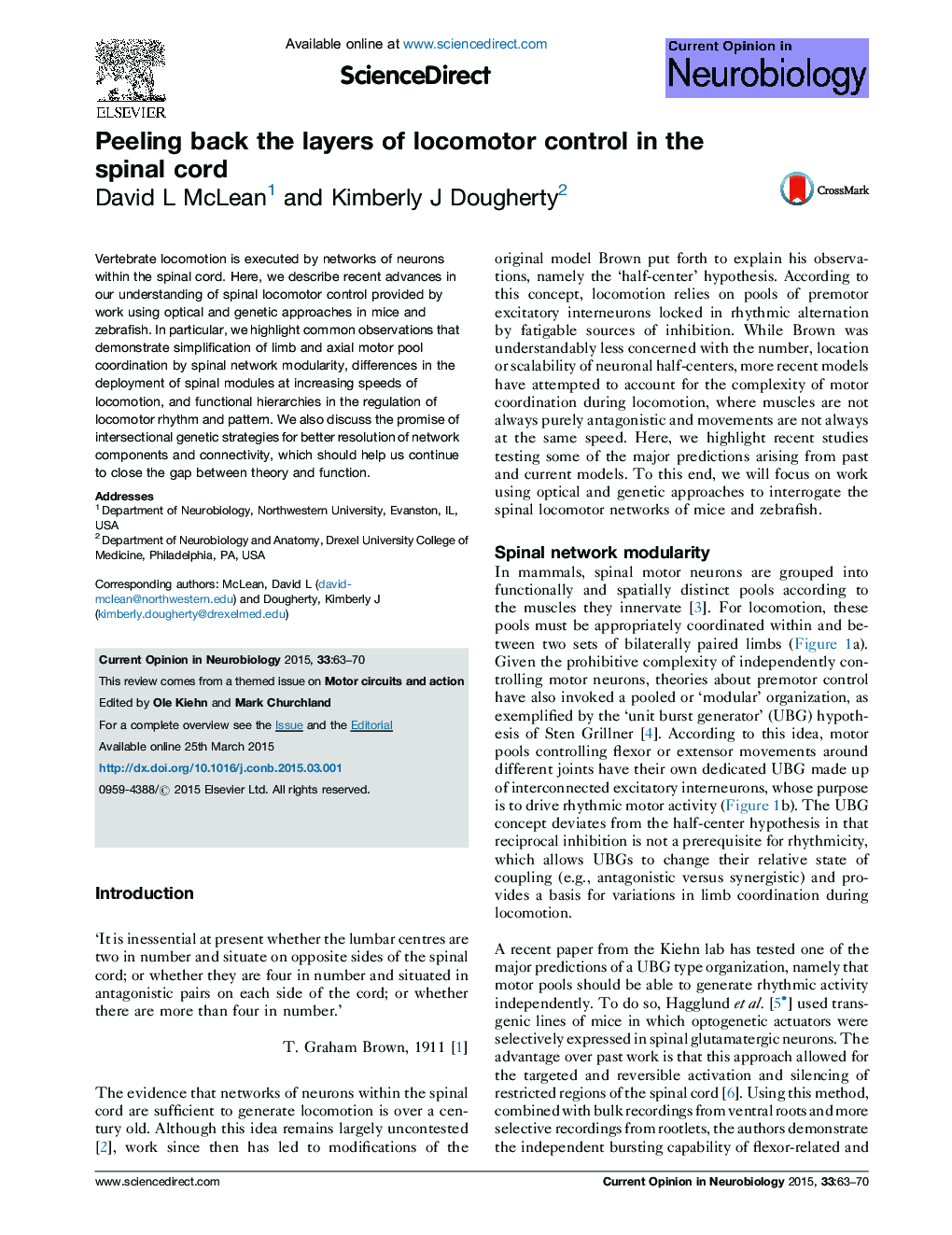| کد مقاله | کد نشریه | سال انتشار | مقاله انگلیسی | نسخه تمام متن |
|---|---|---|---|---|
| 6266467 | 1614516 | 2015 | 8 صفحه PDF | دانلود رایگان |
- Limb and axial motor pool coordination are simplified by spinal network modularity.
- Different spinal modules are deployed at increasing speeds of locomotion.
- Hierarchical networks control the rhythm and pattern of locomotor activity.
- Intersectional genetics promises better resolution of components and connectivity.
Vertebrate locomotion is executed by networks of neurons within the spinal cord. Here, we describe recent advances in our understanding of spinal locomotor control provided by work using optical and genetic approaches in mice and zebrafish. In particular, we highlight common observations that demonstrate simplification of limb and axial motor pool coordination by spinal network modularity, differences in the deployment of spinal modules at increasing speeds of locomotion, and functional hierarchies in the regulation of locomotor rhythm and pattern. We also discuss the promise of intersectional genetic strategies for better resolution of network components and connectivity, which should help us continue to close the gap between theory and function.
Journal: Current Opinion in Neurobiology - Volume 33, August 2015, Pages 63-70
